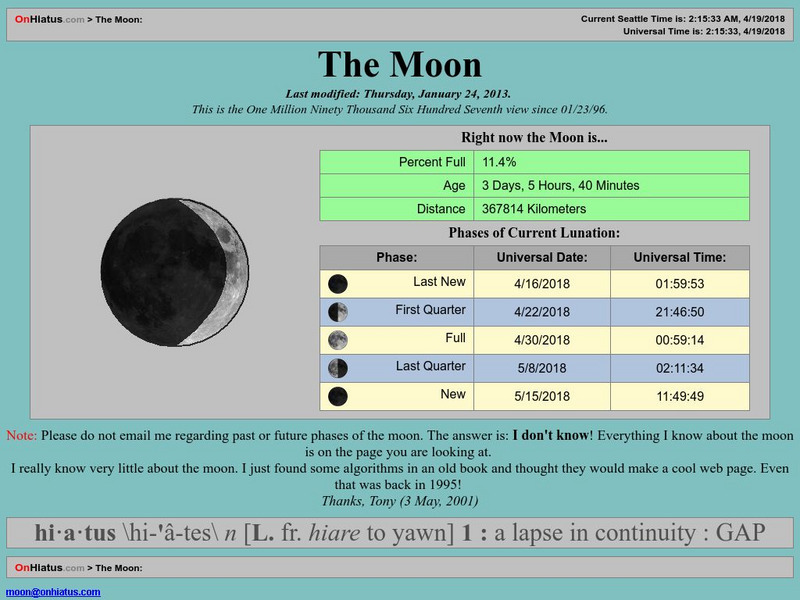Hi, what do you want to do?
Georgia Department of Education
Ga Virtual Learning: Contemporary Issues: Propaganda
This lesson focuses on the seven types of propaganda and their uses. It features a link to a Wikipedia article "Propaganda" and provides an interactive assessment of the seven types.
Other
On Hiatus: The Moon
This commercial site [without any advertising] provides a diagram of the current illumination of the Moon, and the dates of the most recent and upcoming New, Quarter, and Full Moon phases. All dates and times are in universal Time, only.
Alabama Learning Exchange
Alex: It Is Easy Being "Green" Part Iii of Iii
In this third and final installment of the "Green" series, the students will work in their ability groups to create a commercial to advertise their green cleaning product. Students will create a logo and a name brand and market their...
Other
Beer history.com: Library
The American Brewery History homepage discusses the beer industry in American and the role of German-American brewers. Numerous articles on famous beer towns like St. Louis and Milwaukee. Info on famous brewers Busch and Miller, and even...
Independence Hall Association
U.s. History: Land of Television
The advent of increased television programming helped create a national popular culture. Read about the many kinds of television programs offered in the 1950s.
Better Planet Productions
Earth Care: Once More With Feeling [Pdf]
For this activity, students will explore creative ways that materials can be reused. They will then create a commercial to advertise innovative ideas. Follow-up suggestions include having a sale or contacting local secondhand stores.
Curated OER
Unesco: Turkmenistan: Parthian Fortresses of Nisa
The Parthian Fortresses of Nisa consist of two tells of Old and New Nisa, indicating the site of one of the earliest and most important cities of the Parthian Empire, a major power from the mid 3rd century BC to the 3rd century AD. They...
Curated OER
Unesco: Italy: Archaeological Areas of Pompei, Herculaneum and Torre Annunziata
When Vesuvius erupted on 24 August AD 79, it engulfed the two flourishing Roman towns of Pompei and Herculaneum, as well as the many wealthy villas in the area. These have been progressively excavated and made accessible to the public...










![Earth Care: Once More With Feeling [Pdf] Lesson Plan Earth Care: Once More With Feeling [Pdf] Lesson Plan](https://static.lp.lexp.cloud/images/attachment_defaults/resource/large/FPO-knovation.png)